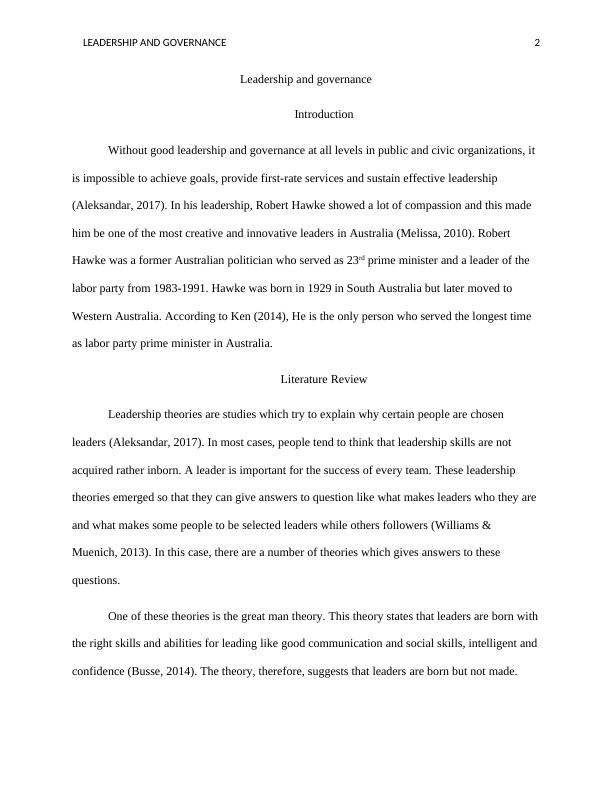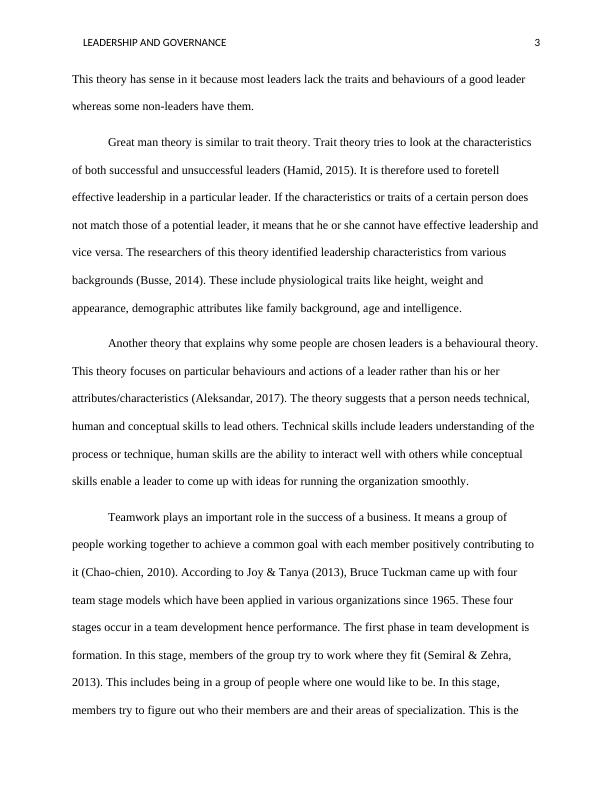Leadership and Governance
10 Pages2396 Words168 Views
Added on 2023-04-11
About This Document
This article discusses the importance of good leadership and governance in public and civic organizations. It explores different leadership theories, such as the great man theory and trait theory, and explains the stages of team development. The article also delves into ethical theories and the significance of diversity in the workplace. Lastly, it touches on the importance of change in leadership and highlights the leadership qualities of Robert Hawke, a former Australian prime minister.
Leadership and Governance
Added on 2023-04-11
ShareRelated Documents
End of preview
Want to access all the pages? Upload your documents or become a member.
A Guide to Leadership and Management
|13
|3880
|148
Leadership and Management MAIN BODY 1
|13
|3749
|351
Leadership in Business
|9
|2083
|135
Report on Leadeship Style of Elon Musk
|11
|3551
|133
Leadership Styles and Theories Adopted by Jeff Bezos
|9
|542
|312
Leadership Theories
|5
|1056
|51



